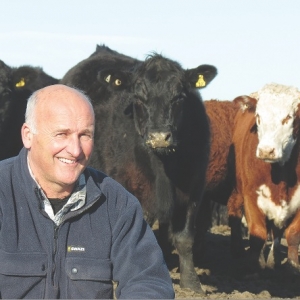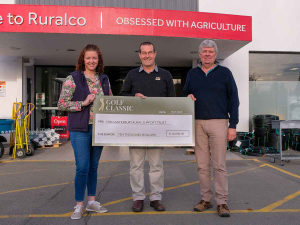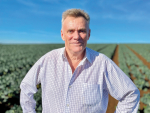Meanwhile finishers should focus on daily liveweight gain and maximum return on feeds.
That’s the message large-scale finisher Roger Dalrymple, Bulls, gave a recent BRIG (Beef Returns Improvement Group – see panel) seminar near Hunterville, Rantikei.
“The one thing that hill country farmers can influence most is their lambing percentage and if they increase this from say 110% to 130%, their returns will skyrocket,” Dalrymple says.
“Too many of them focus on things which take them away from increasing their lambing percentage. In my opinion, their goal must be to optimise lambing percentage.”
A key issue for hill country sheep farmers is to quit lambs before feed is insufficient to maintain both lambs and capital stock.
“The capital stock must always be the priority and their feeding regime should not be compromised.”
On hill country, cattle should be seen as a means of eating excess grass in spring and late summer, grooming pasture to ensure ewes are well fed. A key point is to get calving date right so cows are well fed without affecting feed supply for ewes with lambs at foot.
Buying one- and two-year-old cattle to match demand to spring grass supply is another option but again, they must not be allowed to affect feed supply to breeding ewes, which are the key money makers for the business.
A distraction for some farmers is a person that many regard as a friend – the stock agent, he adds. While agents have a place, too many farmers’ decisions are driven by agents, effectively using them as advisers, instead of focusing on the farm’s key driver of improving lambing percentage, he believes.
“They listen to their stock agent and ask what the market is doing. In reality the market is irrelevant to a certain extent. It’s more important to get the timing [of lamb sales] correct and looking after their capital base for lambing percentage.”
One of Dalrymple’s key messages is to know the value of feeds. Some farms don’t and in effect, sell their grass too cheaply, he warns.
“My entire focus is on cents per kilogram of dry matter. All of my budgeting on the farm including feed budgeting and my gross margins are based around what I actually sell my grass for through my animals. The dairy industry sells it through milk; we sell ours through meat, or wool. But it all comes back to a cents per kg of DM produced off every hectare on the farm. Some things stack up better than others and you don’t know that until you actually know what you are selling your grass for through your lambs, steers or maybe deer.”
Feed quality in terms of metabolisable energy (ME) also needs to be taken into account, as does cost of production of different feeds, he adds.
In his feedlot he uses a nutritionist to produce feed blends to ensure animals get the best possible diet to gain weight quickly. A mixer wagon, as opposed to a basic silage wagon, is needed to blend the different feed elements.
“The best feed is the feed you grow on the farm and the next best option is to buy locally because the transport costs are lower and the chances are you’ll have a better idea of its quality as opposed to buying it sight unseen from another part of the country.
“If you buy feed, don’t wait until others start buying it. Get in early and essentially ignore what others are doing. When you do feed out aim for zero wastage by having a system, such as a feeding trough which minimises wastage.”
Dalrymple developed his own feeders to do that, now marketed as ‘Flexifeeders’. One version is semi portable, the other fully portable.
As a finisher of 35,000 lambs and up to 6,000 cattle, he says hill country farmers should have a clear understanding of his farm’s key driver which is the ability to grow animals fast and well. If he can get a lamb to put on 270g/day as opposed to 170g/day, then his profits take off. When buying lambs the first thing he looks for is healthy ones.
“I only want to buy a lamb that can grow from day one. They must be alert, not obviously stressed or have things like pink eye or runny noses or sore feet. Their drenching should be up to date and we don’t want lambs with lots of wool on them: the time spent shearing reduces growth rate.
“We are selling meat, so lambs bred from terminal sires and with hybrid vigour are our first choice when buying. It also helps us if the lambs are of a similar weight range. Even lines are key.”
The same applies for cattle: even lines reduce bullying and larger mobs where the social order is already established are preferred.









